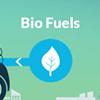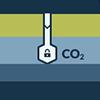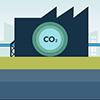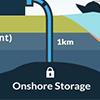Resources
In order to limit average temperature rises to two degrees Celsius (2°C), carbon capture and storage (CCS) is a vital solution to the CO2 problem.
We encourage you to download and use our resources in your projects, papers and presentations.
Downloads
How do we contribute to the climate change problem?
What is the greenhouse effect, and why two degrees?
A summary of the history of energy and and how we got to where we are today.
Industries such as transport, manufacturing and building are energy-intensive and can really benefit from using fuel sources that have low emissions. This might mean replacing fossil fuel-powered vehicles with biofuels, hydrogen or adopting electric-power.
Energy efficiency means using less energy to produce products or services. This may be by conserving energy or through new technical solutions that stop energy being wasted. Many of these solutions are inexpensive and already available, such as better insulation for your home. Energy efficiency is available to everyone and really helps in reducing CO2 emissions.
Heat and electricity generation can be created from nuclear processes. These processes contribute to the range of different energy sources available, and are a promising solution.
Renewable energy comes from natural resources that are naturally replenished such as sunlight and wind. Modern technologies like solar power, wind power, geothermal technology, hydropower and some forms of biomass are common sources of renewable energy. Renewable energies are an important solution towards our climate challenge.
Carbon capture and storage (CCS) is a process used to capture carbon dioxide gas (CO2) emitted while producing power or making goods such as steel or cement. To keep CO2 out of the atmosphere, it is captured from the power plant or factory, transported and safely stored underground, permanently. CCS can capture around 90% of the CO2 from power stations and industrial facilities, making a very strong contribution towards our climate change challenge.
New technology can improve how we generate power, helping to reduce emissions such as swapping from coal to gas, which produces much less CO2. One day new gas-fired power plants may be required to be built and operated with CCS technology for even better reductions in CO2 emissions.
Fuel such as coal, oil or natural gas is burnt (combusted) to produce energy. The carbon dioxide is captured during this process.
Once captured, the CO2 is compressed and transported. There are already many pipelines around the world that safely transport large amounts of CO2 every day.
Once CO2 has been captured and transported, it is injected deep underground, usually over 1 km, where it can stay indefinitely. Storage of CO2 has safely happened around the world for many years. CO2 also has many uses, such as in the food and beverage industry for putting the gas in soda, and to aid industrial processes such as the recovery of oil from underground, known as enhanced oil recovery.

Students
See other students taking on the CO2degrees Education Challenge, and learn more from other organisations that are working on CCS.

Educators
Download resources to host your own CO2degrees workshop, and get in touch with educators around the world.

Resources
Download our useful resources to get up to speed on CCS and the climate change challenge.












